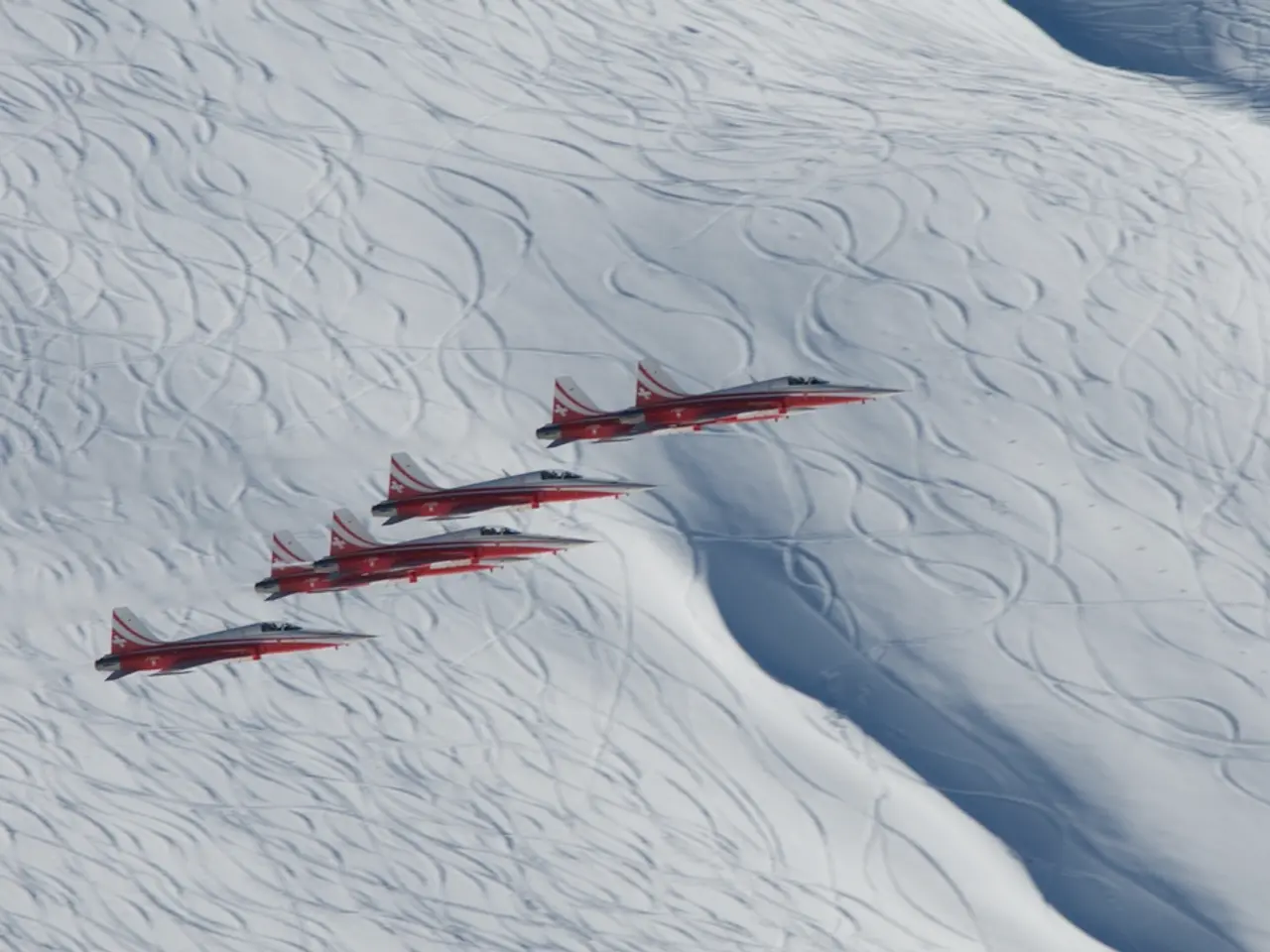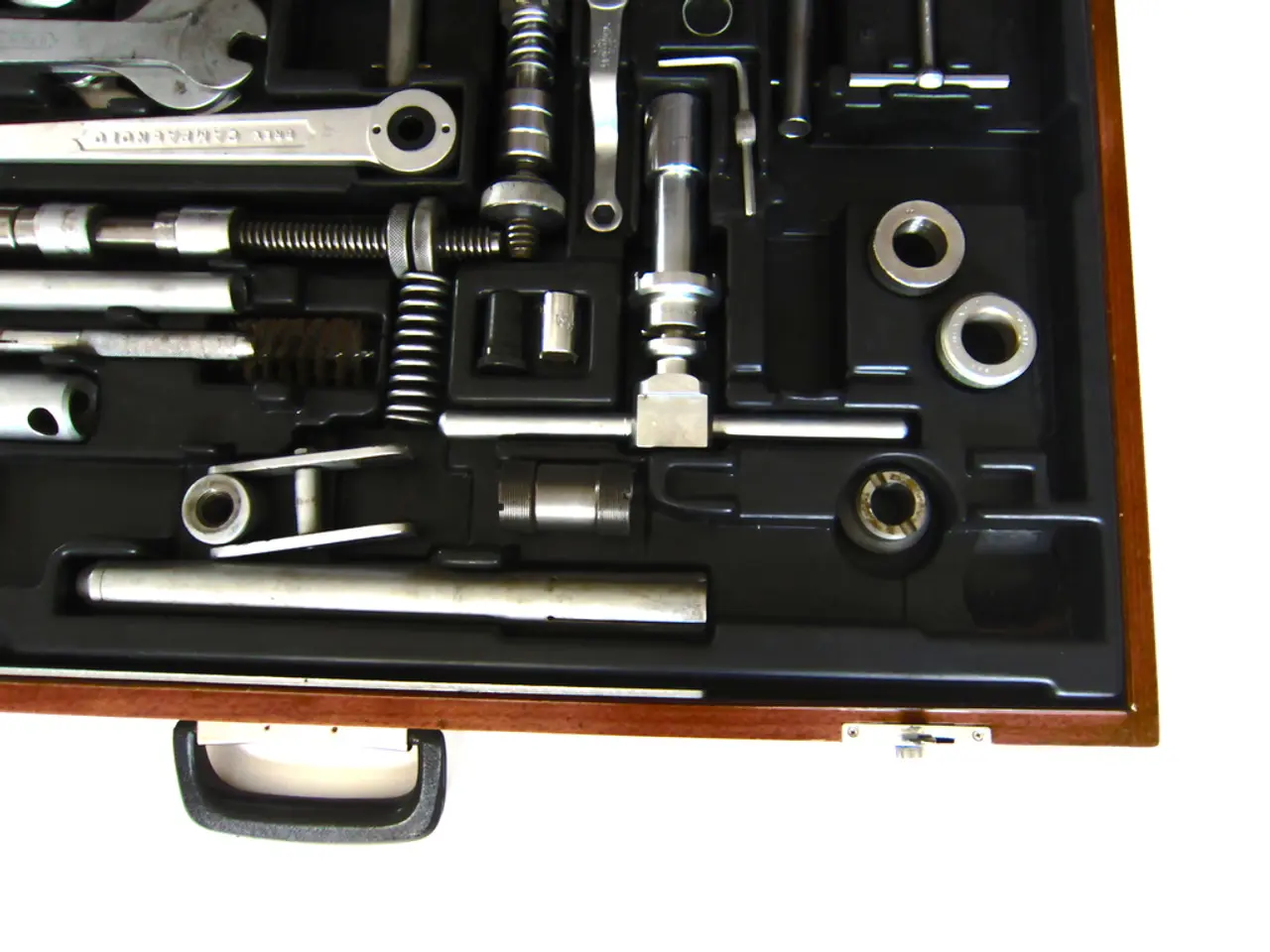Practical Advice for Soaring Drones in Cold Weather
In the colder months, flying drones requires special considerations to ensure safety and effectiveness. Here are some best practices for battery performance, visibility, camera settings, and ice formation:
Battery Performance
Cold temperatures significantly reduce battery life and performance. To maintain battery efficiency, keep batteries warm before flight by storing them in inner pockets or a warm car. Limit flight duration to shorter periods and carry fully charged spare batteries to conserve battery life for a safe return. Rotate batteries as needed[1].
Visibility
Winter conditions like fog near warm fronts, snow, or ice can reduce visibility and increase risk. Avoid flying in dense fog or immediately before/after thunderstorms associated with cold fronts. Utilise drones with intelligent flight features such as obstacle avoidance and return-to-home to help mitigate visibility challenges[1][3].
Camera Settings
Adjust camera settings to optimise for winter lighting; overcast or snowy conditions may require higher ISO and exposure compensation. Avoid shooting near artificial LED lighting if using mirrorless cameras, as they can cause banding or strange effects[2][4].
Ice Formation
Ice can form on drone propellers and sensors, affecting lift and flight stability. Fly at lower altitudes to reduce exposure to turbulence and icing conditions but maintain a safe altitude from obstacles. After each flight, inspect and clear any ice from the drone before the next flight[1].
In addition, always keep your drone within visual line-of-sight, comply with local drone laws (such as altitude limits and distance from people), and plan flights carefully considering weather apps and forecasts[1][3][4][5]. Shorter missions in stable weather windows increase safety.
Other tips include warming up drone batteries by allowing the drone to hover at a low altitude for a few minutes and making small movements, maintaining visual contact with the drone during winter, and keeping drone batteries warm, either inside a warm car or in a well-insulated container. Temperatures drop at higher altitudes, so be cautious flying high in winter.
Experiment with camera settings while the drone is flying in winter, and keep flights shorter than usual to conserve battery life in low temperatures. Maintaining visual contact with the drone is more challenging in fog or snow, and the drone may not be visible beyond a hundred meters. Winter might not be the best time for flying at 400-foot ceiling.
Check for ice on propellers each time the drone lands in winter, as moisture can cause ice formation, particularly on propellers. If visibility is poor during winter, adjust camera settings to compensate. Drone sensors may constantly detect obstacles in winter conditions, making flight more difficult. Adjust camera settings in winter for better exposure and white balance. Ensure batteries are fully charged before winter flights, as winter temperatures are not optimal for drone batteries, affecting their performance and life.
Flying below 20% battery in very cold weather is generally not recommended, and waiting for the RTH function in cold weather is not advisable as the drone might not complete the flight. Batteries have an optimal operating temperature range, and their performance diminishes above or below this range. Flying in fog or snow is not recommended due to the drone's poor response to high humidity and potential sensor malfunction.
Following these best practices helps maintain control and safety while maximising performance and image quality in challenging winter conditions. Happy flying!
[1] Drone Pilot Academy [2] DJI [3] FAA [4] CAA [5] Transport Canada
- In the frigid winter, when flying drones is necessary, it's essential to bear in mind advanced technologies such as drones with intelligent flight features, like obstacle avoidance and return-to-home, to mitigate challenges posed by reduced visibility and icy conditions.
- To ensure drone technology functions effectively and safely in cold temperatures, incorporate practices like keeping batteries warm before flight, utilizing optimal camera settings for winter lighting, and inspecting for ice formation on propellers after each landing.




